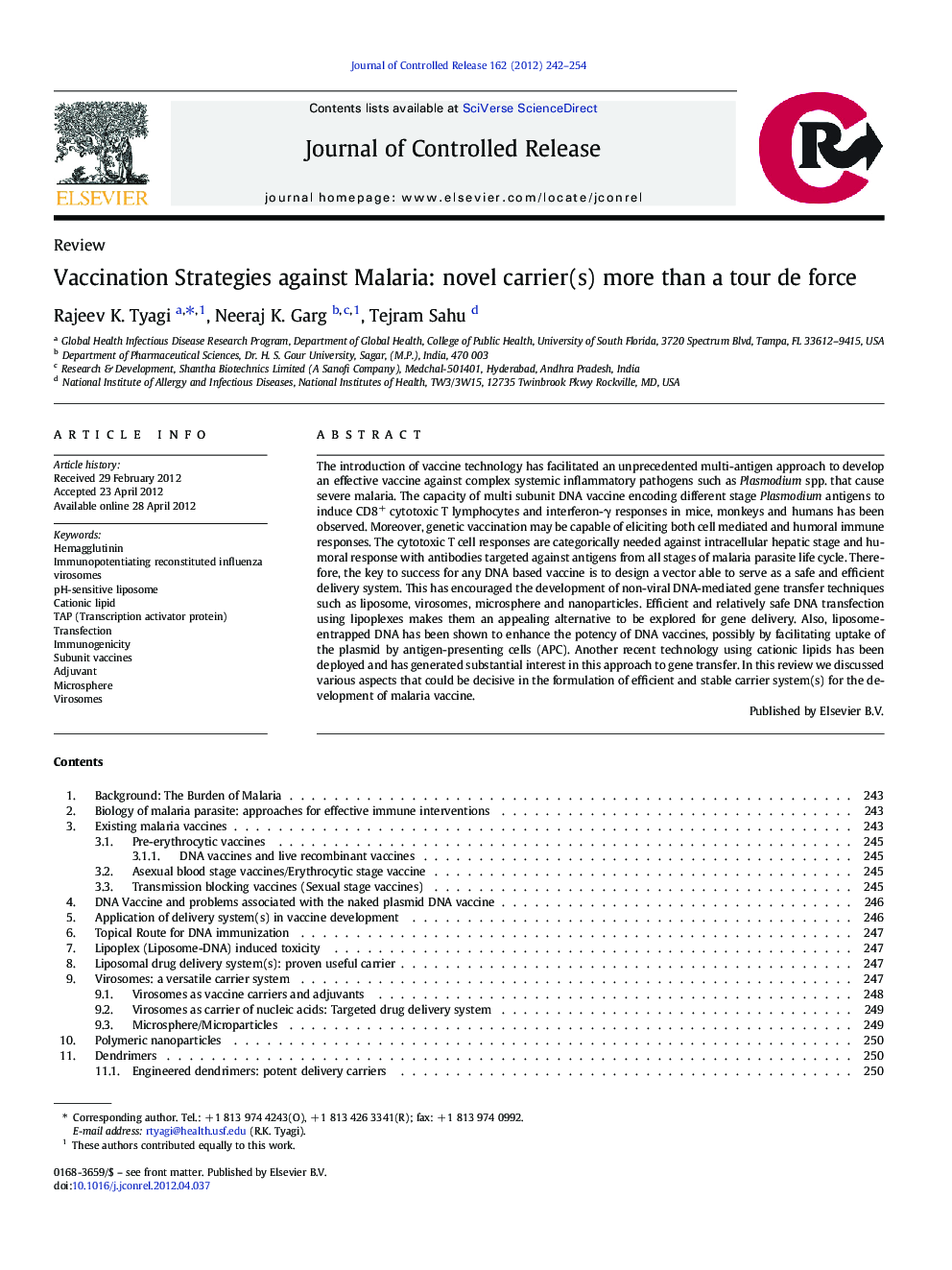| Article ID | Journal | Published Year | Pages | File Type |
|---|---|---|---|---|
| 1424572 | Journal of Controlled Release | 2012 | 13 Pages |
The introduction of vaccine technology has facilitated an unprecedented multi-antigen approach to develop an effective vaccine against complex systemic inflammatory pathogens such as Plasmodium spp. that cause severe malaria. The capacity of multi subunit DNA vaccine encoding different stage Plasmodium antigens to induce CD8+ cytotoxic T lymphocytes and interferon-γ responses in mice, monkeys and humans has been observed. Moreover, genetic vaccination may be capable of eliciting both cell mediated and humoral immune responses. The cytotoxic T cell responses are categorically needed against intracellular hepatic stage and humoral response with antibodies targeted against antigens from all stages of malaria parasite life cycle. Therefore, the key to success for any DNA based vaccine is to design a vector able to serve as a safe and efficient delivery system. This has encouraged the development of non-viral DNA-mediated gene transfer techniques such as liposome, virosomes, microsphere and nanoparticles. Efficient and relatively safe DNA transfection using lipoplexes makes them an appealing alternative to be explored for gene delivery. Also, liposome-entrapped DNA has been shown to enhance the potency of DNA vaccines, possibly by facilitating uptake of the plasmid by antigen-presenting cells (APC). Another recent technology using cationic lipids has been deployed and has generated substantial interest in this approach to gene transfer. In this review we discussed various aspects that could be decisive in the formulation of efficient and stable carrier system(s) for the development of malaria vaccine.
Graphical abstractFigure optionsDownload full-size imageDownload high-quality image (207 K)Download as PowerPoint slide
